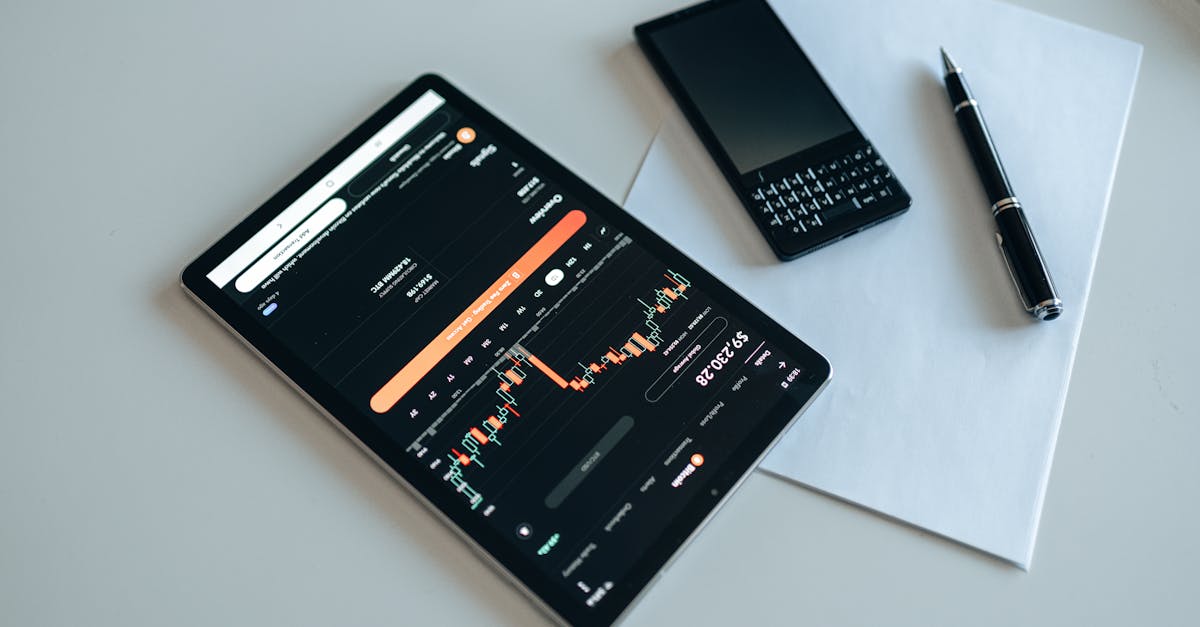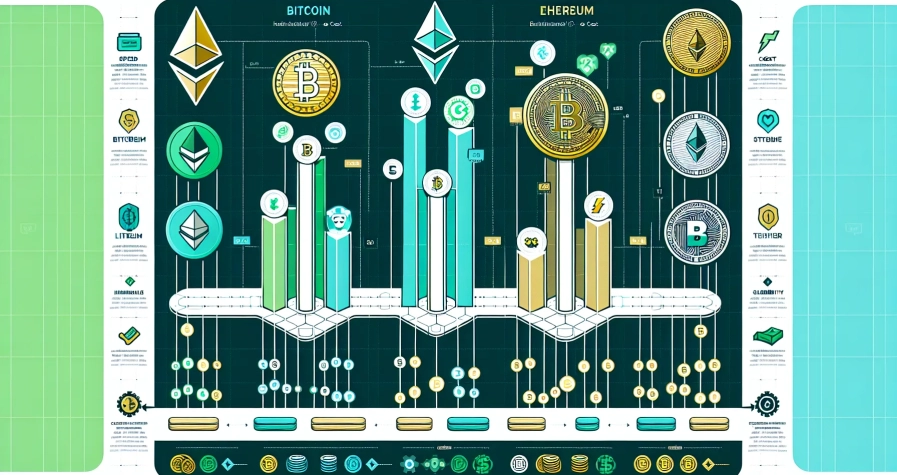Key Takeaways
- Candlesticks reveal complete market stories – Each candlestick displays four crucial price points (open, high, low, close) through its body and wicks, providing instant visual insights into buyer-seller dynamics during specific timeframes.
- Master essential patterns for trading success – Focus on fundamental formations like bullish/bearish engulfing, hammer, doji, and three-candlestick patterns (morning star, evening star) to identify potential market reversals and continuations.
- Choose appropriate timeframes for your strategy – Daily charts offer the most reliable signals for beginners, whilst shorter timeframes (5-15 minutes) provide frequent but noisier signals suitable for experienced day traders.
- Never rely on candlesticks alone – Always combine pattern recognition with volume analysis and technical indicators like RSI, moving averages, and support/resistance levels to confirm trading signals and avoid false breakouts.
- Context matters more than individual patterns – Consider broader market conditions, news events, and multi-timeframe analysis rather than over-interpreting single candlesticks or ignoring the overall trend direction.
- Volume confirmation validates pattern strength – Strong candlestick patterns accompanied by above-average trading volume carry significantly more weight than those occurring during low-volume periods in crypto markets.
Crypto trading can feel overwhelming when you’re staring at charts filled with mysterious bars and lines. Those colourful stick-like patterns aren’t random decorations – they’re candlesticks, and they hold the key to understanding market movements and making informed trading decisions.
Candlestick charts originated in 18th-century Japan for rice trading but have become the gold standard for analysing cryptocurrency markets today. Each candlestick tells a story about price action during a specific time period, showing you exactly how buyers and sellers battled for control.
Whether you’re planning to trade Bitcoin, Ethereum, or any other cryptocurrency, mastering candlestick patterns is essential for your success. You’ll discover how to read these visual indicators, spot potential opportunities, and avoid common pitfalls that catch beginners off guard. Let’s transform those confusing charts into your personal roadmap for navigating the crypto markets.
What Are Candlestick Charts in Cryptocurrency Trading
Candlestick charts display cryptocurrency price data through individual candles that represent specific time periods such as 1 minute, 5 minutes, 1 hour, or 1 day. Each candlestick contains four essential price points: opening price, closing price, highest price, and lowest price during that timeframe.
The structure of each candlestick consists of a body and two wicks (shadows). The body represents the difference between opening and closing prices, whilst the wicks extend from the body to show the highest and lowest prices reached during the period. Green or white candlesticks indicate bullish periods where the closing price exceeded the opening price, whilst red or black candlesticks show bearish periods where prices fell from open to close.
Cryptocurrency exchanges like Binance, Coinbase Pro, and KuCoin use these charts as their primary visual tool because candlesticks reveal market sentiment more effectively than simple line charts. You can observe buying and selling pressure through the size and colour of each candle, making it easier to identify potential trend reversals or continuations.
Time frames significantly impact your trading analysis when using candlestick charts. Daily candlesticks provide broader market trends suitable for long-term holding strategies, whilst 15-minute candlesticks offer detailed entry and exit points for day trading activities. Popular cryptocurrencies like Bitcoin (BTC) and Ethereum (ETH) show distinct candlestick patterns that repeat across different timeframes, creating predictable trading opportunities.
The visual nature of candlestick charts allows you to quickly assess market conditions without analysing complex numerical data. Volume indicators often accompany these charts, showing the number of tokens traded during each candlestick period, which confirms the strength of price movements and validates potential trading signals.
Basic Components of a Candlestick
Every candlestick contains three fundamental elements that reveal critical price information during your chosen timeframe. These components work together to provide instant visual insights into market dynamics and trading pressure.
The Body
The body represents the rectangular centre portion of each candlestick and displays the price difference between opening and closing prices. You’ll notice that larger bodies indicate stronger buying or selling pressure during that specific period.
Body characteristics reveal market strength:
- Wide bodies demonstrate significant price movement with strong directional momentum
- Narrow bodies suggest limited price movement and potential market indecision
- Doji patterns occur when opening and closing prices are nearly identical, creating minimal body size
The body’s size directly correlates with trading volume and market conviction. When Bitcoin moves from £65,000 to £68,500 during a four-hour period, you’ll observe a substantial green body reflecting this £3,500 increase.
The Wicks (Shadows)
Wicks extend above and below the candlestick body, representing the extreme price levels reached during your selected timeframe. These thin lines capture the complete price range beyond the opening and closing values.
Wick interpretation provides volatility insights:
- Upper wicks show the highest price achieved during the period
- Lower wicks indicate the lowest price reached during the timeframe
- Long wicks suggest high volatility with significant price rejections
- Short wicks indicate stable price action near opening and closing levels
Consider a scenario where Ethereum opens at £2,400, closes at £2,450, reaches a high of £2,520, and drops to a low of £2,350. The wicks extend from the body boundaries to these extreme points, revealing the full trading range.
Colour Coding: Green vs Red Candles
Colour coding instantly communicates the relationship between opening and closing prices, enabling you to assess market sentiment at a glance. This visual system eliminates the need for detailed price comparisons.
| Candle Colour | Price Movement | Market Sentiment | Trading Implication |
|---|---|---|---|
| Green | Close > Open | Bullish | Buyers dominated |
| Red | Close < Open | Bearish | Sellers dominated |
Green candles indicate bullish momentum:
- Opening price appears at the bottom of the body
- Closing price sits at the top of the body
- Buyers successfully pushed prices higher during the period
Red candles signal bearish pressure:
- Opening price positions at the top of the body
- Closing price settles at the bottom of the body
- Sellers overwhelmed buyers throughout the timeframe
This colour-coded system allows you to quickly identify trends and reversals across multiple timeframes simultaneously.
How to Read Individual Candlesticks
Individual candlesticks form specific patterns that reveal crucial market information about cryptocurrency price movements. These patterns help you identify potential trading opportunities and predict future price directions.
Bullish Candlestick Patterns
Bullish patterns signal potential upward price movement or trend reversals from bearish to bullish conditions.
Bullish Engulfing Pattern
This pattern occurs when a small red candlestick appears followed by a larger green candlestick that completely engulfs the previous one. Strong buying pressure emerges after selling pressure weakens, indicating potential upward momentum.
Hammer Pattern
You’ll recognise a hammer by its small body positioned near the top of the candlestick with a long lower wick extending downward. Sellers initially push prices lower, but buyers regain control and drive prices back up, suggesting a potential bullish reversal.
Morning Star Pattern
This three-candlestick formation starts with a large red candle, followed by a small-bodied candle (often a doji), and concludes with a large green candle. The pattern typically appears at the bottom of downtrends and signals a shift from bearish to bullish sentiment.
Bearish Candlestick Patterns
Bearish patterns indicate potential downward price movement or trend reversals from bullish to bearish conditions.
Bearish Engulfing Pattern
A small green candlestick followed by a larger red candlestick that completely engulfs it creates this pattern. Selling pressure overwhelms buying pressure, suggesting potential downward price movement.
Shooting Star Pattern
This candlestick features a small body near the bottom with a long upper wick extending upward. Buyers initially push prices higher, but sellers force prices back down, indicating potential bearish reversal.
Evening Star Pattern
Three candlesticks form this pattern: a large green candle, followed by a small-bodied candle, and completed by a large red candle. This formation often marks the end of uptrends and signals potential downward movement.
Doji and Neutral Patterns
Doji candlesticks have extremely small bodies where opening and closing prices remain nearly identical, creating a cross-like appearance.
Market Indecision Signals
Doji patterns indicate equilibrium between buyers and sellers, with neither side gaining significant control. These formations suggest market uncertainty and potential trend changes.
Confirmation Requirements
You can’t rely on doji patterns alone for trading decisions. These neutral formations require confirmation from subsequent candlesticks or technical indicators like RSI or moving averages to validate potential reversals.
Timeframe Considerations
Doji patterns on daily or weekly charts carry more significance than those appearing on hourly or minute charts. Longer timeframes provide stronger signals and reduce false reversal indications in volatile crypto markets.
Essential Candlestick Patterns for Beginners
These fundamental candlestick patterns form the backbone of crypto chart analysis, enabling you to identify market sentiment shifts and potential trading opportunities. Mastering these patterns enhances your ability to predict price movements in Bitcoin, Ethereum, and other cryptocurrencies.
Single Candlestick Patterns
Hammer appears after downtrends and signals potential bullish reversals in crypto markets. This pattern features a small body positioned at the top with a long lower wick extending at least twice the body’s length, indicating that sellers pushed prices down but buyers regained control before closing.
Doji represents market indecision where opening and closing prices remain nearly identical, creating a cross-like appearance. You’ll recognise this pattern when the body becomes almost non-existent, with wicks extending above and below showing price volatility during the trading period.
Shooting Star emerges during uptrends and warns of potential bearish reversals. This pattern displays a small body at the bottom with a long upper wick, demonstrating that buyers initially drove prices higher but sellers dominated by the close.
Spinning Top indicates market uncertainty with its small body centred between long upper and lower wicks of similar length. This pattern suggests neither buyers nor sellers gained decisive control during the timeframe.
Two-Candlestick Patterns
Bullish Engulfing occurs when a large green candlestick completely engulfs the previous red candle’s body, signalling strong buying pressure and potential upward momentum. The second candle’s opening price sits below the first candle’s closing price, whilst its closing price exceeds the first candle’s opening price.
Bearish Engulfing forms when a large red candlestick fully encompasses the preceding green candle’s body, indicating powerful selling pressure and possible downward movement. This pattern often appears at resistance levels in crypto charts.
Piercing Line develops during downtrends when a green candle opens below the previous red candle’s low but closes above its midpoint. This pattern suggests weakening bearish momentum and potential trend reversal.
Dark Cloud Cover manifests during uptrends when a red candle opens above the previous green candle’s high but closes below its midpoint, warning of possible bearish reversal.
Three-Candlestick Patterns
Three White Soldiers consists of three consecutive long green candlesticks with progressively higher closes, each opening within the previous candle’s body. This pattern demonstrates sustained bullish momentum and strong buying conviction in crypto markets.
Three Black Crows presents three consecutive long red candlesticks with progressively lower closes, each opening within the preceding candle’s body. This formation indicates persistent bearish pressure and potential continued downward movement.
Morning Star begins with a long red candle, followed by a small-bodied candle (often a Doji), and concludes with a long green candle that closes above the first candle’s midpoint. This three-candle pattern signals potential bullish reversal after downtrends.
Evening Star starts with a long green candle, continues with a small-bodied candle, and ends with a long red candle closing below the first candle’s midpoint. This pattern indicates possible bearish reversal following uptrends in cryptocurrency markets.
Time Frames and Their Importance
Time frames determine the clarity and reliability of your candlestick signals when trading cryptocurrencies. Your chosen timeframe directly affects your trading opportunities and risk exposure across different market conditions.
Short-Term vs Long-Term Analysis
Short-term analysis focuses on rapid price movements within minutes to hours, making it ideal for scalping and day trading strategies. Shorter timeframes like 5-15 minutes provide frequent trading signals but contain more market noise and false positives that can mislead your decisions.
Long-term analysis examines broader trends spanning days to weeks, offering more reliable patterns for position trading. Daily and weekly timeframes deliver the most dependable candlestick formations whilst generating fewer trading opportunities compared to shorter periods.
| Timeframe Type | Duration | Trading Style | Signal Quality | Risk Level |
|---|---|---|---|---|
| Short-term | 5-15 minutes | Scalping/Day trading | High frequency, more noise | Higher |
| Medium-term | 1-4 hours | Swing trading | Balanced frequency | Moderate |
| Long-term | Daily/Weekly | Position trading | Most reliable | Lower |
Medium timeframes between 1-4 hours strike an optimal balance for swing traders, providing reasonable signal frequency whilst maintaining better reliability than shorter periods.
Choosing the Right Time Frame
Match your timeframe to your trading objectives and available time commitment. Day traders benefit from 15-minute to 1-hour charts for identifying quick entry and exit points, whilst position traders achieve better results using daily or weekly timeframes.
Beginners often start with longer timeframes due to their increased reliability and reduced market noise. Daily candlesticks offer clearer patterns and trend identification compared to minute-based charts that can overwhelm new traders with excessive information.
Multi-timeframe analysis combines different periods to verify signals across various time horizons. You might use daily charts to identify the overall trend direction, then switch to hourly charts for precise entry timing, ensuring your trades align with both short-term opportunities and long-term market momentum.
Consider your risk tolerance when selecting timeframes, as shorter periods typically require tighter stop-losses and generate more frequent but smaller profit opportunities compared to longer timeframes that offer larger moves but require greater patience.
Common Mistakes When Reading Crypto Charts
Over-interpreting single candlesticks leads to faulty trading decisions. You might search for meaning in every individual candle, but one candlestick only displays the final price outcome without revealing the detailed sequence of trades that occurred during that period. This approach causes misreading of market dynamics and creates false confidence in weak signals.
Ignoring market context undermines your chart analysis effectiveness. Candlesticks alone don’t capture complete market sentiment or trading volume data, which remain critical for confirming price signals. You must examine broader market conditions, news events, and sector trends alongside your candlestick patterns to validate trading opportunities.
Neglecting the sequence of price highs and lows creates incomplete market understanding. Shadows don’t reveal whether high or low prices occurred first during the timeframe, missing crucial nuances in buyer-seller dynamics. This limitation means you can’t determine if price rejection happened early or late in the period, affecting your interpretation of market strength.
Relying solely on candlestick patterns generates excessive false signals. Patterns like doji, hammer, or engulfing formations provide valuable insights but require combination with other technical indicators such as RSI, moving averages, or support/resistance levels. You strengthen your analysis by confirming candlestick signals through multiple technical tools rather than depending on pattern recognition alone.
FOMO and market noise amplify trading mistakes in 24/7 crypto markets. Cryptocurrency’s continuous volatility means you encounter constant price movements that can trigger impulsive decisions. You must filter out excessive “noise” from shorter timeframes and avoid making trades based purely on brief candlestick movements without considering longer-term trends.
Mismatching timeframes with trading strategies causes analysis conflicts. You might spot a bullish pattern on a 5-minute chart while the daily chart shows bearish momentum, creating confusion about market direction. Your chosen timeframe must align with your trading objectives – scalping strategies require shorter periods whilst swing trading demands longer timeframes for accurate signal confirmation.
Overlooking volume confirmation weakens pattern reliability. Strong candlestick patterns accompanied by low trading volume often fail to produce expected price movements. You enhance your chart reading accuracy by ensuring significant volume supports your identified patterns, particularly during breakouts or reversal formations.
Practical Tips for Analysing Candlestick Charts
Effective candlestick analysis requires systematic approaches that combine pattern recognition with confirmation tools. These practical techniques enhance your ability to identify reliable trading signals and avoid false breakouts in volatile crypto markets.
Using Volume Alongside Candlesticks
Volume provides crucial validation for your candlestick patterns, distinguishing between genuine market moves and temporary fluctuations. Candlestick formations accompanied by high trading volume carry significantly more weight than those occurring during low-volume periods.
When you spot a bullish engulfing pattern on rising volume, this combination suggests strong buying conviction behind the upward price movement. Conversely, bearish patterns appearing alongside increased volume indicate serious selling pressure that’s likely to continue.
Key volume indicators to monitor:
- Above-average volume: Confirms the strength of your identified pattern
- Declining volume: Weakens the reliability of reversal signals
- Volume spikes: Often coincide with significant price breakouts or trend changes
- Diverging volume: When price moves up but volume decreases, expect potential reversals
Your trading accuracy improves when you combine bullish hammer patterns with volume surges exceeding the 20-day average. Similarly, doji formations become more significant when paired with unusually high trading activity, indicating genuine market indecision rather than low-participation drift.
Combining with Other Technical Indicators
Multi-indicator analysis strengthens your candlestick interpretations by filtering false signals and confirming market direction. Popular technical tools complement candlestick patterns by providing additional context about market momentum and trend strength.
The Relative Strength Index (RSI) identifies overbought conditions above 70 and oversold levels below 30, enhancing your candlestick reversal signals. When you observe a hammer pattern forming in oversold territory (RSI below 30), this confluence suggests a higher probability of upward price reversal.
Essential indicator combinations:
- Moving averages: Confirm trend direction when candlestick patterns align with 50-day or 200-day moving average crossovers
- Bollinger Bands: Detect volatility breakouts when candlestick formations occur near band extremes
- MACD: Validate momentum shifts through histogram changes coinciding with your pattern recognition
- Support/resistance levels: Strengthen reversal patterns when they form at established price levels
Your trading decisions become more reliable when shooting star patterns appear near Bollinger Band upper boundaries, indicating potential resistance and downward movement. Similarly, morning star formations gain credibility when they develop above ascending moving averages, suggesting bullish trend continuation rather than mere temporary bounces.
Conclusion
Mastering candlestick charts represents your first crucial step toward becoming a confident cryptocurrency trader. These powerful visual tools provide the foundation you’ll need to interpret market sentiment and make informed trading decisions in the volatile crypto landscape.
Remember that successful chart analysis isn’t just about memorising patterns—it’s about understanding the story behind each candlestick and what it reveals about buyer and seller behaviour. You’ll find that combining candlestick patterns with volume analysis and other technical indicators creates a much stronger foundation for your trading strategy.
Start with longer timeframes to build your confidence before moving to shorter periods. Practice identifying patterns on historical charts and always wait for confirmation before acting on signals. With consistent practice and patience you’ll develop the skills needed to navigate crypto markets effectively and avoid the common pitfalls that trap many beginners.
Frequently Asked Questions
What are candlestick charts and where did they originate?
Candlestick charts are visual tools that represent cryptocurrency price movements over specific time periods. They originated in 18th-century Japan for rice trading and show the relationship between buyers and sellers. Each candlestick displays four key price points: opening, closing, highest, and lowest prices, making them more informative than simple line charts for understanding market sentiment.
What do the different colours of candlesticks mean?
Green or white candlesticks indicate bullish periods where the closing price is higher than the opening price, showing upward momentum. Red or black candlesticks signify bearish trends where the closing price is lower than the opening price, indicating downward pressure. This colour coding allows traders to quickly assess market sentiment and identify trends.
What are the main components of a candlestick?
A candlestick consists of two main parts: the body and the wicks. The body represents the price difference between opening and closing prices, with larger bodies indicating stronger buying or selling pressure. The wicks extend above and below the body, showing the extreme price levels reached during the timeframe and providing insights into market volatility.
What are some common bullish candlestick patterns?
Common bullish patterns include the Bullish Engulfing, where a large green candle completely engulfs the previous red candle; the Hammer, featuring a small body with a long lower wick; and the Morning Star, a three-candle pattern signalling potential upward reversals. These patterns indicate potential upward price movements or trend changes.
What timeframes should beginners use for crypto trading?
Beginners should typically start with longer timeframes like daily or weekly charts, as they provide clearer patterns with less market noise. Short-term timeframes (1-minute to 1-hour) are better suited for experienced day traders, whilst medium-term (4-hour to daily) and long-term (weekly to monthly) timeframes offer more reliable signals for position trading strategies.
What common mistakes should traders avoid when reading candlestick charts?
Traders should avoid over-interpreting single candlesticks, ignoring market context, and relying solely on patterns without confirmation from volume or other technical indicators. Additionally, they shouldn’t let FOMO influence decisions, must match timeframes to their trading strategy, and should always consider broader market conditions and news events that might affect price movements.
How important is volume when analysing candlestick patterns?
Volume is crucial for confirming candlestick patterns. High trading volume validates patterns and distinguishes genuine market moves from temporary fluctuations. Above-average volume and volume spikes help confirm trading signals. Without volume confirmation, candlestick patterns may produce false signals, making volume analysis an essential component of successful cryptocurrency trading strategies.
What is a Doji pattern and what does it indicate?
A Doji is a candlestick pattern where the opening and closing prices are nearly identical, creating a cross-like appearance. It indicates market indecision between buyers and sellers. Doji patterns require confirmation from subsequent candlesticks or technical indicators for trading decisions, with those appearing on longer timeframes carrying more significance and providing stronger signals.








